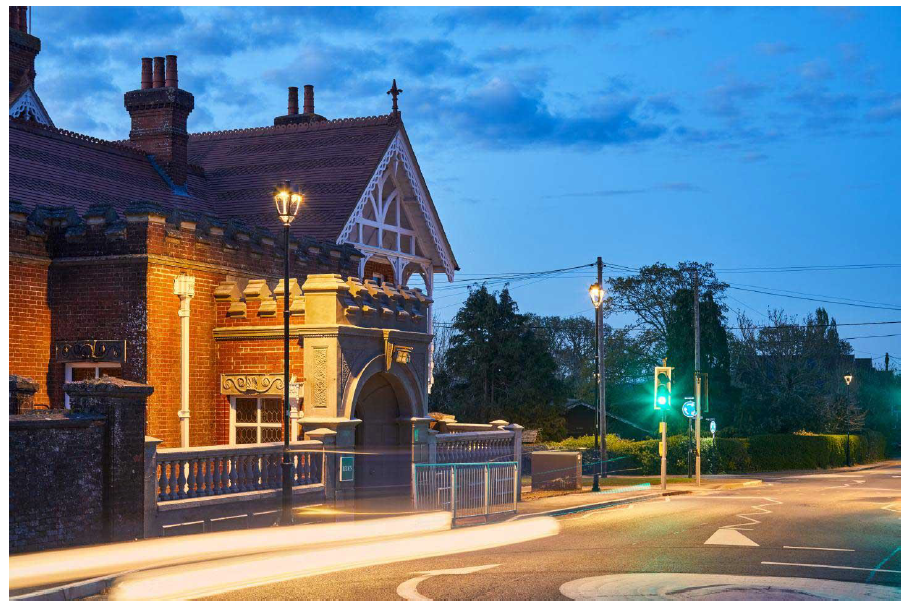
Bede’s School, The Dicker
Bede’s School is located in the heart of the vibrant rural community of The Dicker in Sussex. When two new roundabouts were built to improve traffic flow, the existing lighting became ineffective, resulting in a dark and complex junction where four roads converge. Bede’s School commissioned Schréder to deliver a lighting upgrade that would address modern needs while respecting the area’s rural character.
Lighting with purpose The new lighting needed to achieve the following key objectives:
improve safety and security for drivers and pedestrians near the school;
reduce energy consumption, maintenance interventions and costs through innovative lighting technologies;
minimise light pollution for residents living nearby and to protect dark skies and local biodiversity. Our solution centred on Schréder EXEDRA, our control management system (CMS), which gives customers full visibility of and control over their lighting networks via any secure, internet-enabled device. The smart lighting system ensures the right amount of light, in the right place at the right time.
Lighting on demand To maximise energy savings further and support dark sky protection, radar and PIR sensors have been integrated into the Schréder EXEDRA system. The radar sensors are positioned so that they point away from the village and can detect oncoming vehicles before they reach the junction. Meanwhile, the PIR sensors face the school and nearby pedestrian crossings, accurately detecting foot traffic in these frequently used areas. When presence is detected, the lanterns increase to full lighting levels to improve visibility and provide reassurance. After a short period of inactivity, the lighting gradually dims, following a defined schedule:
6pm – 10pm: 100% output
10pm – midnight: 50% output
Midnight onwards: 20% output
This action helps protect the night sky and has resulted in energy savings of 33%. These dimming regimes and lighting levels can be altered remotely by registered users at any time via the secure Schréder EXEDRA interface. The system also enables the monitoring of peak activity, sensor performance and lantern operation, prompting data-driven adjustments that further improve efficiency and performance.